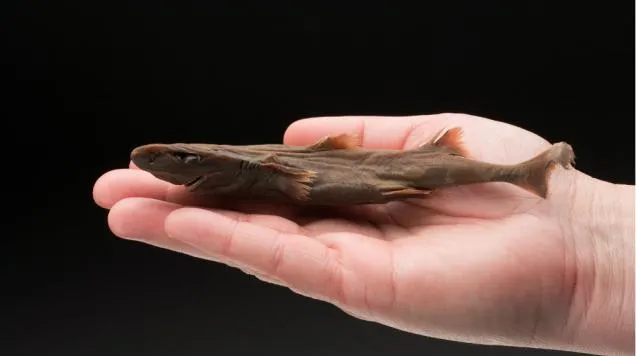Dwarf Lantern Shark

The smallest shark, a dwarf lantern shark (Etmopterus perryi) is smaller than a human hand. It's rarely seen and little is known about it, having only been observed a few times off the northern tip of South America at depths between 283–439 meters (928–1,440 feet). The specimen pictured here was discovered in the Caribbean Sea off the coast of Colombia in 1985 at a depth of 290 m (950 ft).
Like other lantern sharks, the dwarf lantern shark has light-emitting organs called photophores along its belly and fins. These help them camouflage when they feed in shallower water: the lit-up belly blends in with sunlight streaming down from above. In darker water, the light attracts smaller animals, which the shark preys upon. It also has big eyes (for a shark) to help it see in the mostly-dark waters of the ocean's twilight zone.
Watch a short video about a lantern shark from NOAA, read another theory of how lantern shark "lightsabers" warn approaching predators to stay away, and learn about its much larger relative, the great white shark.

